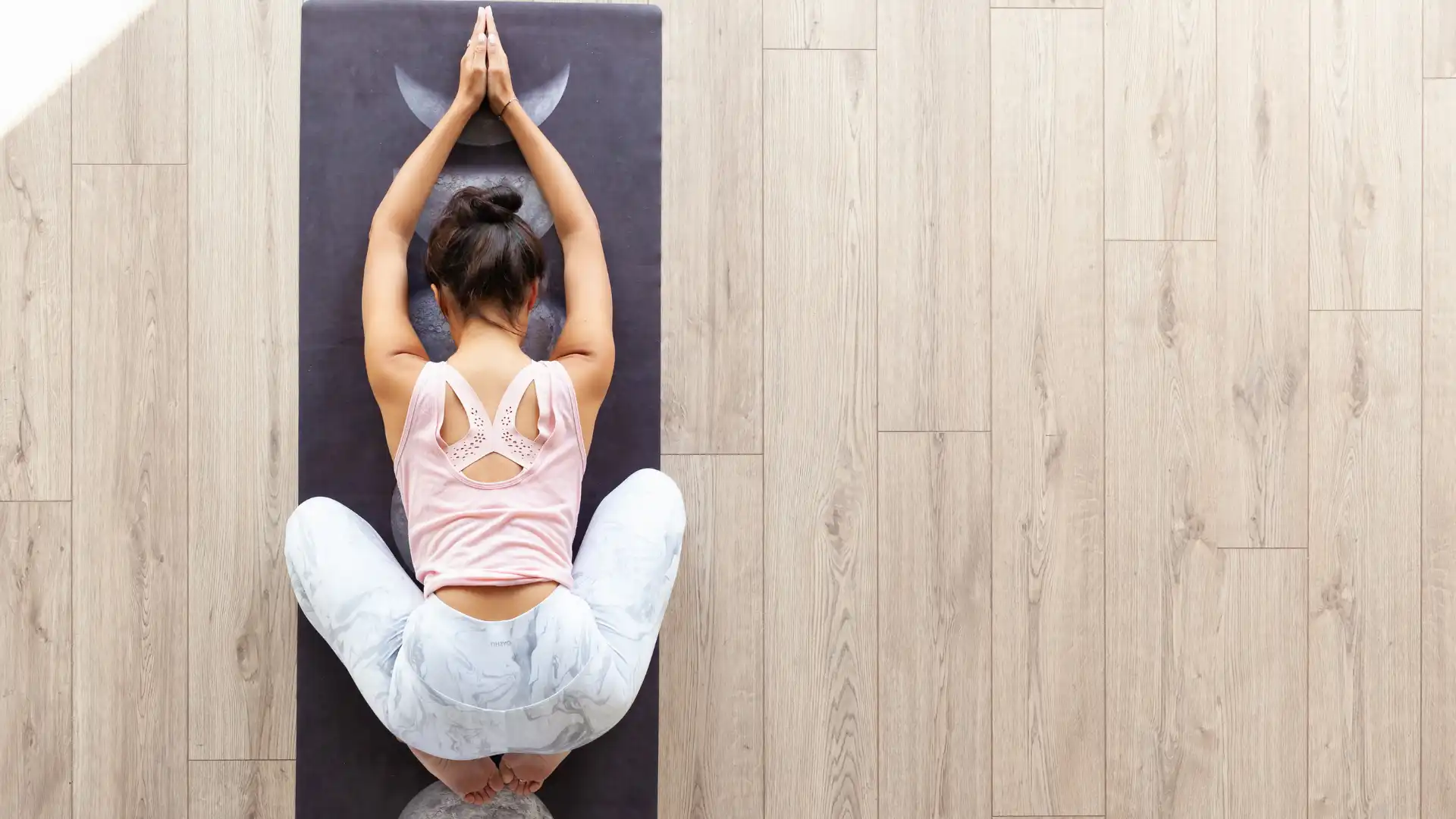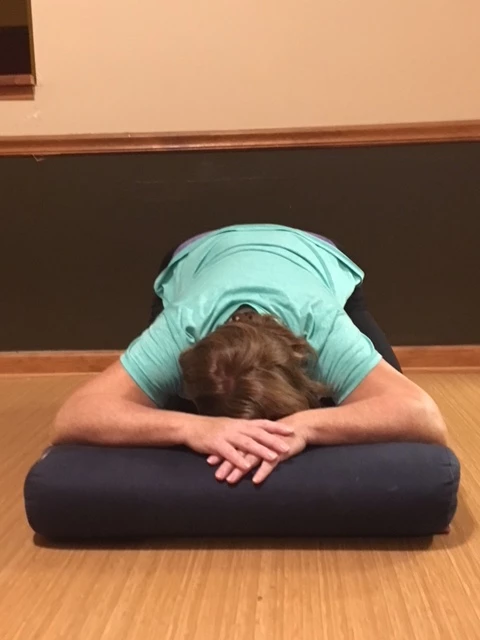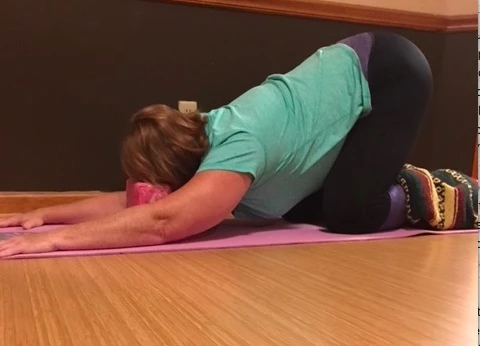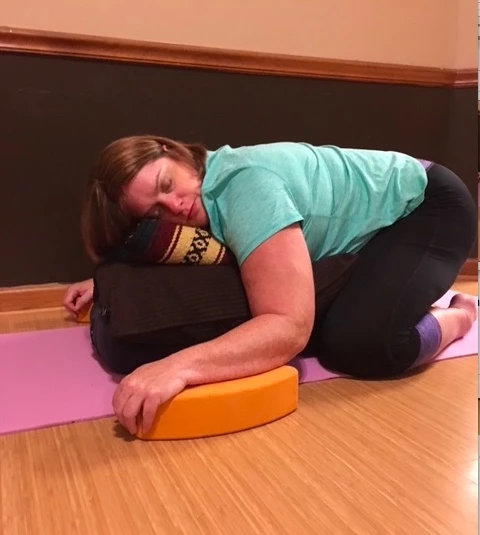Restore Any Time: 5 Awesome Child’s Pose Variations

Article At A Glance
Discover the power of Child’s Pose in your yoga practice by learning these 5 restful variations. Whether you’re a seasoned yogi or just starting your journey, these Child’s Pose variations will enhance your practice and provide a blissful escape from the daily grind.
Ahh, the joy and relief of Child’s Pose variations after a sweaty yoga practice! Though often seen as simply a resting pose, the benefits of Child’s Pose are so much more than just taking a break between vinyasa flows.
The Benefits of Child’s Pose
Child’s Pose (Balasana) is a soothing stretch that has the following benefits when we practice it mindfully:
- Gently stretches the hips, thighs, and ankles
- Relieves stress, fatigue, and anxiety
- Improves mental focus
- Relieves back and neck pain
- Relaxes the muscles on the front of the body
- Passively stretches the muscles on the back of the body
How to Practice Child’s Pose

You can practice Child’s Pose at any time during your yoga practice.
- To come into Child’s Pose, begin on your hands and knees.
- Gently push your hips back toward your heels and separate your knees slightly wider than your hips.
- With your big toes together, your legs will form a V shape.
- As you exhale, lay your torso between your thighs, resting your forehead on the mat.
5 Variations of Child’s Pose (Balasana)
Here are five variations of Child’s Pose to explore in your yoga practice.
1. Child’s Pose to Help Alleviate Headache Pain 
Adding a bolster under the forehead can relieve headaches and tension in the neck and upper back, which is often the root cause of headaches.
- Kneel on the floor with a large bolster placed horizontally in front of you. Bring your toes together with the knees wide.
- Reach forward, extend your torso, and rest your forehead on the bolster. Fold your arms comfortably and relax your neck, jaw, and shoulders.
- When coming out of this variation of Child’s Pose, be sure to sit up slowly and allow your head to come up last.
2. Side Stretch Child’s Pose
By simply changing the position of the arms, Child’s Pose can offer a delicious side stretch.
- Once in Child’s Pose, extend the left arm off the mat to the left.
- Keeping the right arm extended, bring it over to the left as close to the left arm as possible.
- While pushing the hands into the floor on the left, gently push the hips to the right for a stretch along the right side.
- Be sure to repeat on the opposite side.
Optional hands-on adjustment: If you have been educated in hands-on adjustments and are comfortable teaching them, you can assist your yoga students in a deeper side stretch.
- Standing behind your student, place your left hand on the student’s left shoulder.
- Place your right hand on the outer edge of the student’s right hip.
- Using a very gentle touch, slowly massage the shoulder and hip in opposite directions from each other.
Hands-on adjustments should only be made by experienced teachers who have been educated on how to make safe, gentle adjustments. Always ask permission before touching a student in any yoga pose.
3. Standing Option: Child’s Pose for Lower Back Pain
Child’s Pose is an excellent back stretch but can be difficult for people with knee issues. This standing variation provides the same passive relief while avoiding knee flexion.
- Standing at a table or kitchen counter, hinge forward your hip joints, resting your upper body on the table. For proper alignment, be sure your hip crease is at the edge of the table.
- For taller yoga students, folded blankets on the table can provide enough height and support to allow the body to relax.
- To come out of the standing variation of Child’s Pose, place your hands on the counter or table and slowly walk back, keeping the upper body hinged forward.
- Bend your knees deeply and slowly rise with a flat back.
4. Child’s Pose Variation For Deep Shoulder Stretch 
For those who carry tension in the trapezius, rhomboid, or shoulders, Child’s Pose can also be a deep stretch for the upper back area.
- From Bharmanasana (Tabletop Pose), walk both arms slightly forward of the shoulders.
- Keep your arms straight and the elbows extended but not locked, and move your hips back towards the heels. Keep the buttocks slightly higher than normal.
- A block under your forehead will provide additional support for the head and neck while allowing your shoulders to release lower to the mat.
5. Restorative Child’s Pose Variation
Although most yoga students find comfort in Child’s Pose, those with limited shoulder or knee flexibility may find it difficult to get into or to relax in.
Blankets, bolsters, and pillows can be used to fill the space between your body and the floor. 
- Begin on your hands and knees with your big toes together and your knees wide.
- Place a large bolster between your knees, tucked inside your thighs. If knee flexion is an issue, place the folded side of a blanket deep into the knee crease to provide more height.
- Drape your torso over the bolster and rest your head on whichever side is most comfortable.
- If your shoulders and hips aren’t in the same plane, add height with folded blankets or pillows under the torso for additional support.
- If your elbows hover or can’t comfortably rest on the mat, place additional pillows on both sides from your elbow to your hand.
- Allow yourself to rest in Child’s Pose for as long as possible. For added neck comfort, switch in which direction your head rests about halfway through the time allotted for the pose.
Exploring these Child’s Pose variations can help you deepen your rest between yoga vinyasas or allow for a more restful time spent in restorative yoga.
 Jennifer Williams-Fields E-RYT 200 is passionate about writing, yoga, traveling, public speaking, and being a fabulous single momma to six super kids. Doing it all at one time, however, is her great struggle. She has taught yoga since 2005 and has been writing since picking up a crayon. Although her life is a sort of organized chaos, she loves every minute of the craziness and is grateful for all she’s learned along the way. Her first book “Creating A Joyful Life: The Lessons I Learned From Yoga and My Mom” is now available on Amazon. She has featured her essays on Yahoo! and Dr. Oz’s The Good Life. She is a regular writer for Elephant Journal Magazine, Your Tango, and YogaUOnline.
Jennifer Williams-Fields E-RYT 200 is passionate about writing, yoga, traveling, public speaking, and being a fabulous single momma to six super kids. Doing it all at one time, however, is her great struggle. She has taught yoga since 2005 and has been writing since picking up a crayon. Although her life is a sort of organized chaos, she loves every minute of the craziness and is grateful for all she’s learned along the way. Her first book “Creating A Joyful Life: The Lessons I Learned From Yoga and My Mom” is now available on Amazon. She has featured her essays on Yahoo! and Dr. Oz’s The Good Life. She is a regular writer for Elephant Journal Magazine, Your Tango, and YogaUOnline.



